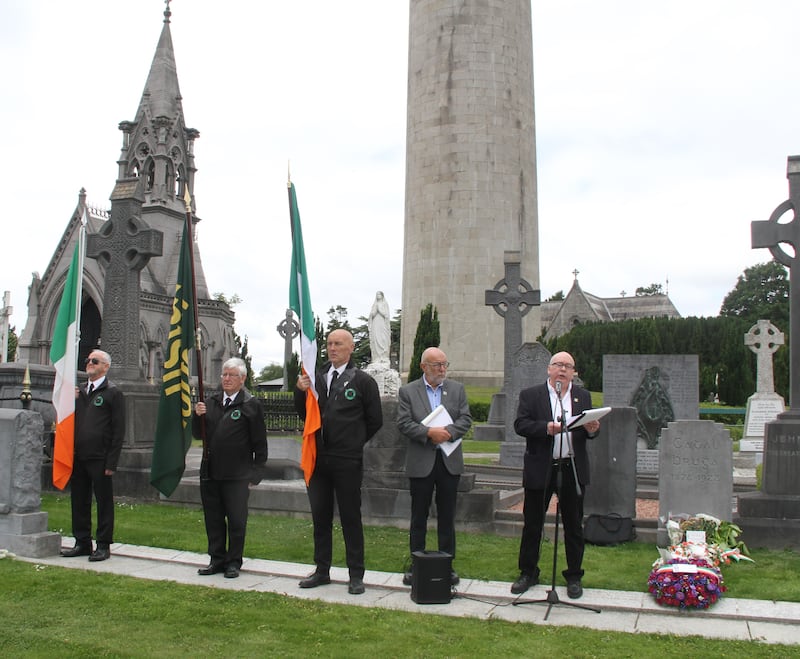A century after he died in the Mater Hospital from a single bullet wound, Cathal Brugha was remembered in Glasnevin Cemetery.
Brugha became the first high-profile fatality of the Civil War during the Battle of Dublin which followed the siege of the Four Courts.
On July 7th 1922 he met his end at the back of the Hammam Hotel which had been shelled by the National Army. He emerged down a laneway off O’Connell Street firing his pistol, dusty and shell-shocked, into the path of a National Army sniper and was felled with a single gunshot to the leg.
Brugha, who later died in hospital from shock and blood loss from his wound, had shown a reckless disregard for his own safety – or preternatural courage, depending on your point of view. He left behind a widow and six young children.
RM Block
There was no state ceremony to remember the first Ceann Comhairle and Minister for Defence in the first Dáil who became one of the most ferocious opponents of the Anglo-Irish Treaty.
Instead, the National Graves Association held a service which was attended by two of Brugha’s grandchildren, Cathal and Deirdre Brugha.
Brugha’s death came as a shock to both sides in the Civil War. He had the most bitter falling out with Michael Collins who he accused of being a glory hunter intent on taking the credit which rightly belonged to others.
But in death Collins remarked: “Because of his sincerity, I would forgive him anything. At worst, he was a fanatic. At best, I number him among those who had given their all.”
The colour party included a flagbearer carrying the tricolour with the letters “IR” denoting the words Irish Republic in the middle. This was the unofficial flag of anti-Treaty republicans who claimed the National Army had dishonoured the tricolour.

The oration was given by historian Mario Corrigan in the absence of fellow historian Gerard Shannon who has Covid-19.
Mr Corrigan recalled the irony of Brugha dying as the result of a single gunshot when he was so badly injured during the Easter Rising having incurred 25 wounds at the South Dublin Union. He was not expected to live and walked with a limp for the rest of his life.
On January 21st, 1921 Brugha’s was the first voice in the first Dáil following the reading of the Declaration of Independence stating, “Deputies, you understand from what is asserted in this declaration that we are now done with England.”
Brugha has been the subject of much controversy over the last 100 years with many depicting him as an unreasonable fundamentalist but a new biography, Cathal Brugha: ‘An Indomitable Spirit by Daithí Ó Corráin and Gerard Hanley gives a more nuanced picture.
Mr Corrigan described Brugha as a “complicated man of fierce determination and principle”.
“Modern historical research has proved more sympathetic than the previous one-dimensional portrayals of a man of little vision or purpose. He was obsessively devoted to Ireland and the cause of Ireland’s independence.”
Separately, relatives left a portrait and flowers to mark the centenary of the death of Private Gerald O’Connor, one of the first National Army fatalities of the Civil War. He is remembered on the restored National Army memorial which surrounds Michael Collins’ grave.
Private O’Connor was killed when as part of a convoy travelling from Dublin to Killaloe in Co Clare. He was shot in the head near Roxboro’, between Loughrea and Gort, County Galway. He was employed as a furniture dealer before joining the National Army.













